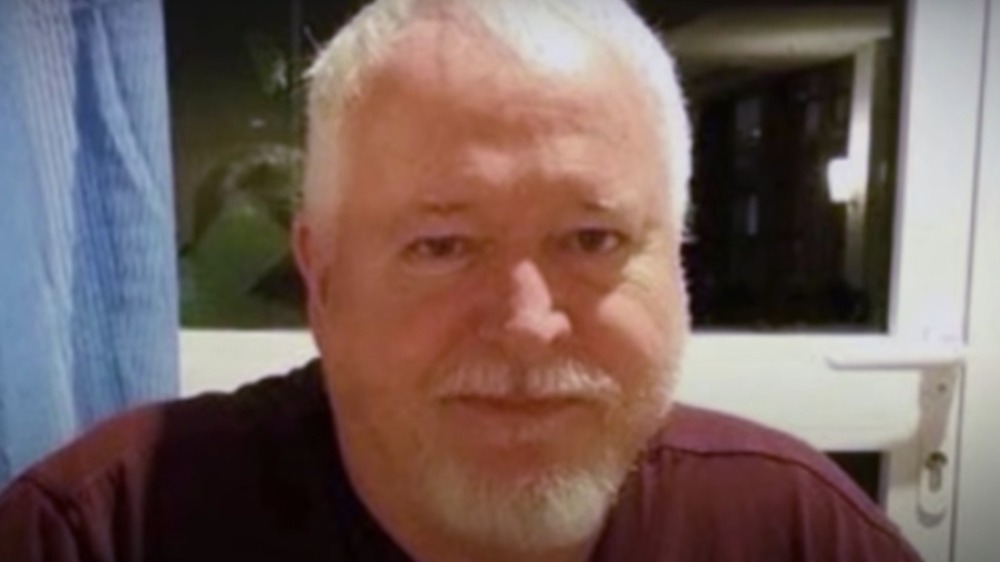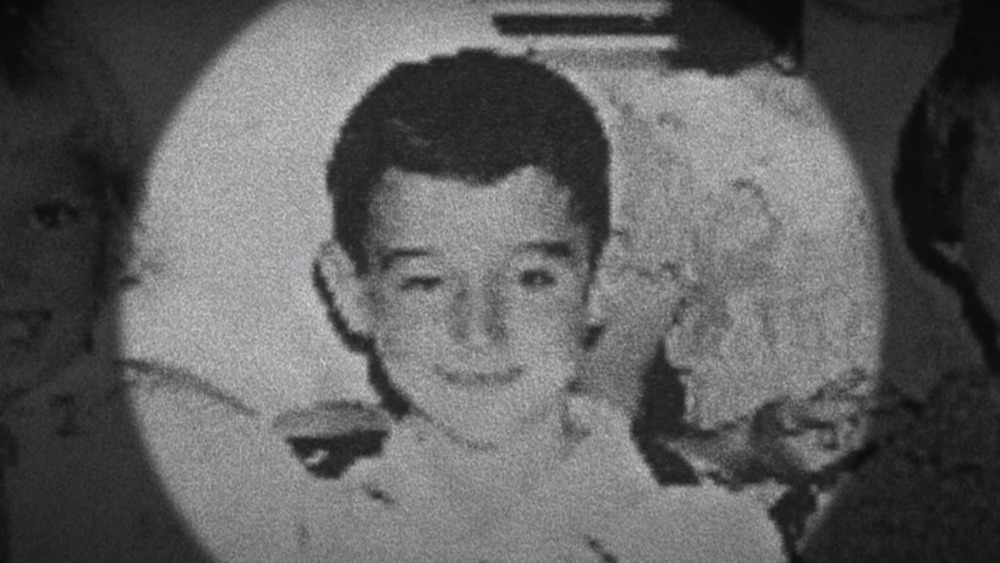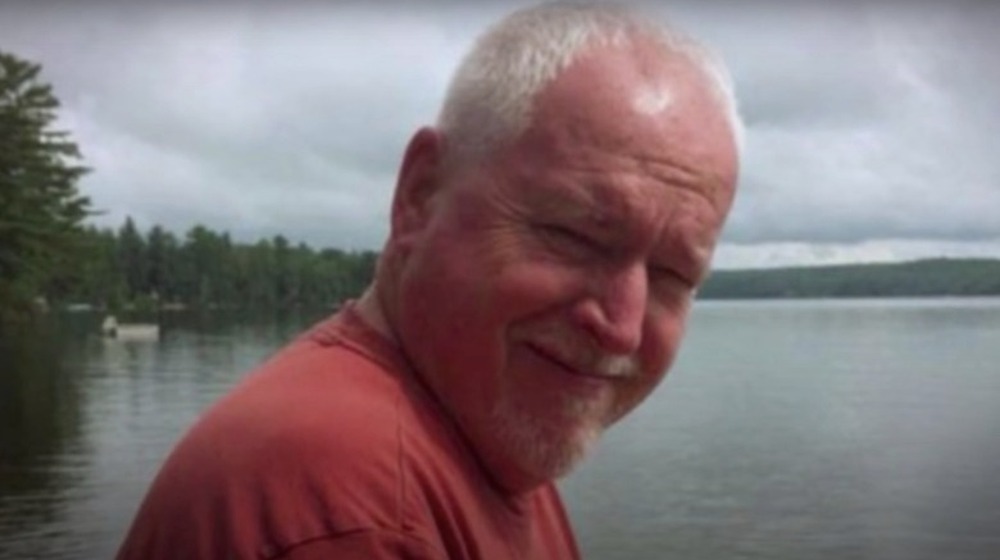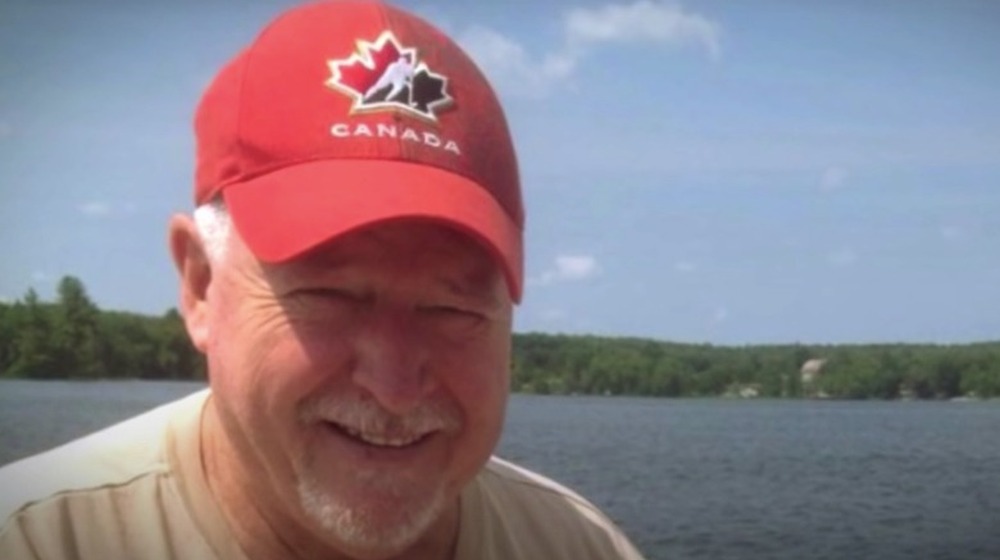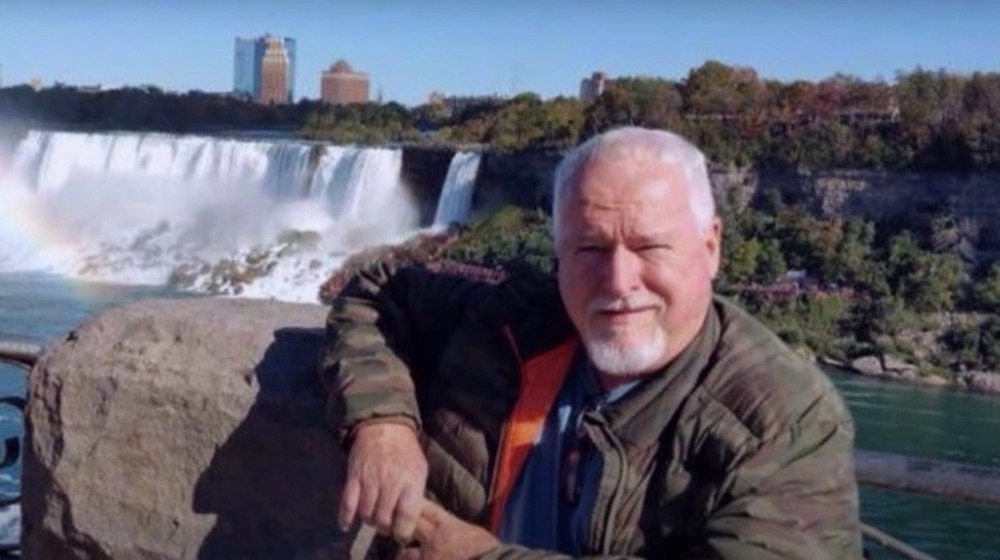The Untold Truth Of Serial Killer Bruce McArthur
In 2017, police in Toronto, Ontario, Canada, arrested the city's most prolific serial killer in its history. NBC News called him "Canada's 'Gay Village' serial killer," since in the seven years before his arrest, he had murdered at least eight men connected in one way or another to the Church and Wellesley neighborhood, the city's gay enclave. All of the victims had one thing in common: they were all gay men. And most of them were immigrants to Canada, many of whom were leading double lives, hiding their sexual orientations from their families back home. They were from Turkey, Iran, Afghanistan, and Sri Lanka, and believed that they had come to a safe country where they would be free from persecution or discrimination. However, they were all unfortunate enough to have met Bruce McArthur.
One of his victims was a homeless sex worker, another an asylum-seeker evading deportation. Their disappearances went unreported. But after Andrew Kinsman went missing in June 2017, police finally began to pay attention. Kinsman was well known in the neighborhood for his gay rights activism and his time tending bar at a popular Church and Wellesley watering hole, and his friends drew attention to his disappearance by posting flyers with his picture on them. Toronto police created a special task force to investigate the rash of missing men, and they finally arrested the person responsible six months later.
Bruce McArthur 'wasn't like the rest of the boys'
When reporter Brad Hunter looked into Bruce McArthur's life to put together a biography of the serial killer for the Toronto Sun, what he found was one unlikely suspect. The subject of his investigation was such a seemingly normal guy that Hunter compared him to "a taupe paint job in a suburban living room." Hunter recalled the work of German political theorist Hannah Arendt and her term to describe Nazi war criminal Adolf Eichmann: "the banality of evil." Bruce McArthur just didn't fit our preconceived notions of what a serial killer should be.
McArthur's childhood was spent in Woodville, Ontario, a small rural town northeast of Toronto. Born in 1951, he was raised on a farm, went to elementary school in a one-room schoolhouse, and lived far from the free love hippiedom and sexual revolution of the 1960s counterculture. He was a suck-up, an unapologetic teacher's pet, a tattletale. His fellow classmate Ron MacEachern said he never got into trouble, but loved being the one who told on those who did. "He just wasn't like the rest of the boys," said MacEachern.
Such surroundings were obviously not conducive for coming out as gay. Criminologist Michael Arntfield told the Toronto Sun that in this strictly conservative rural environment, McArthur "would have felt immense pressure to conform." And that's exactly what he did.
Bruce McArthur's marriage was a sham
McArthur ended up marrying his high school girlfriend, Janice Campbell, after they graduated in 1970. The National Post notes the irony in the pet peeve his future wife listed in their high school yearbook: "someone who can't decide what they want." McArthur would spend the better part of the next three decades not being able to decide on what he wanted. They had two children together, and by the early 1990s, he was working as a traveling salesman, stocking department stores in northern Ontario with socks and underwear.
Although McArthur went to prison for the eight murders in the 2010s, authorities believe his spree could have started two decades earlier, as he crisscrossed the largely empty northern part of the province. But the search for evidence won't be easy. This area contains a virtually infinite number of places to hide bodies.
Perhaps emboldened by this newfound mobility and freedom, McArthur finally came out to his wife and family toward the end of the 1990s. At the time, they were living in Oshawa, a small city east up the coast of Lake Ontario from Toronto, where there was no such thing as a gay scene. When Bruce left Janice in 1998 or 1999, under amicable circumstances, he moved to Toronto to begin his new life as an out gay man.
Bruce McArthur worked as a mall Santa while he was an active serial killer
According to Maclean's, McArthur started a whole new life in Toronto. He opened a landscaping business he named "Artistic Design," and soon had dozens of clients. He even got a holiday gig working as a mall Santa, since he was pretty much perfect for the part: white skin, white hair, white beard, a big, bouncy potbelly, and a jolly attitude. Under that lovable exterior, however, lurked a paragon of Arendt's "banality of evil."
McArthur also began exploring his newfound sexual freedom by frequenting Toronto's gay district, the Church and Wellesley neighborhood, but he soon began to show that he was not as jolly as the red velvet suit would lead one to believe. He was actually exiled from the Gay Village in 2003, after he used a metal pipe to assault a man there in 2001. For three years, he was not allowed to enter the Gay Village. According to the Toronto Star, a psychological report on McArthur prepared for his sentencing in 2003 concluded that the risk that he would go on to commit more violent acts was "very minimal." Unfortunately, for the eight victims a decade later, that psychologist's prediction was dead wrong.
McArthur used his landscaping business to get rid of the bodies of his victims
There was one job description that McArthur did not list on his resume: that of an undertaker. As Australia's 7News reports, the landscaper who was great with his clients' kids (he was Santa, after all) "was turning their gardens into graveyards."
McArthur was a necrophile, meaning he performed sexual acts on his victims after killing them. Like most serial killers, his MO had a ritualistic quality. He preferred to strangle his victims with a rope tightened using a metal bar. And he liked to photograph them once they were dead. He wrapped one in a fur coat and placed a cigar in his mouth for one post-mortem photoshoot. He sometimes shaved their heads or beards. He saved these digital photos in order to be able to relive his crimes later.
Once he was done with his morbid photoshoots, he would dismember the men's bodies and bury the evidence in the gardens he worked on at his day job. His clients were none the wiser. Karen Fraser, whose home was turned into a crime scene after McArthur's arrest, said she didn't expect such a thing of him. "He was the best friend, neighbor, relative, anyone could want," she told 7News. The police ended up searching 75 properties connected to McArthur during their investigation.
McArthur was arrested just in time to save the life of his next victim
Bruce McArthur was arrested on January 18, 2018, after a six-month investigation into the disappearance of Andrew Kinsman. According to the BBC, authorities had found the word "Bruce" on Kinsman's calendar the day he disappeared in June the year before. Then they found surveillance footage of Kinsman getting into McArthur's minivan, which justified a warrant to covertly search his apartment, where they found photographic evidence of the murders of Kinsman and another of his victims. They knew they had to act when they saw another man arrive at his apartment.
When the police came to McArthur's door, the serial killer's potential next victim was handcuffed to the bed with a black bag without holes to see or breathe pulled over his head. McArthur was about to put tape over the man's mouth when he heard a knock at his door. The police raided his apartment, found more evidence connecting him to other murders, and saved the man's life. The New York Times reported in February 2019 that McArthur pleaded guilty to the murders of the eight men and was sentenced to life in prison, and that he would not be eligible for parole for 25 years. The story of the investigation that led to his arrest is the subject of the new true crime documentary Catching A Serial Killer: Bruce McArthur, which premieres Sunday, April 11, on Oxygen and the NBC app.
